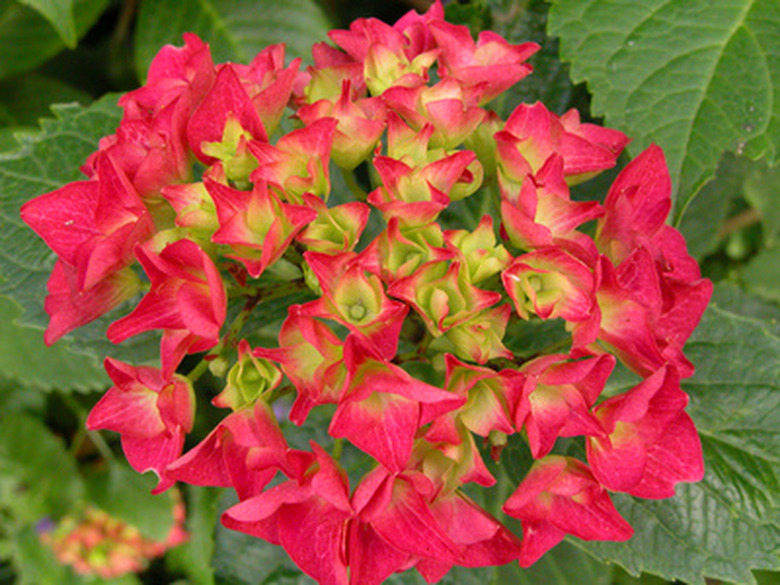How To Propagate A Climbing Hydrangea
A climbing hydrangea will produce hundreds of beautiful clusters of small, colorful blooms for a large part of the growing season. But before you plant that climber, keep in mind that no one is quite sure just how large a climbing hydrangea can get. It is known that they can easily reach heights of 75 feet and probably much more. If not provided with a flat surface to climb, they can spread on the ground in an invasive manner, chokin-art.html'>choking out all other vegetation. Your climbing hydrangea will search for a vertical flat surface on which to lock its climbing roots. Once firmly established, it is almost impossible to completely remove the roots of a hydrangea from a flat surface. It is these roots, however, that make it so easy to propagate a climbing hydrangea.
- A climbing hydrangea will produce hundreds of beautiful clusters of small, colorful blooms for a large part of the growing season.
- If not provided with a flat surface to climb, they can spread on the ground in an invasive manner, choking out all other vegetation.
Step 1
Using your gardening shears, clip off 10 inches of new growth from the tip of a climbing hydrangea branch that is not producing flowers. Make sure the cutting has several leaf nodes and/or the beginnings of roots used for clinging to flat surfaces. Cuttings are best taken between April and August, after new growth has begun, but before the plant is in full flower.
Step 2
Prepare the ground for your hydrangea cutting by digging up an area 4 by 4 feet if possible. Mix 1 shovel of loam and 1 shovel of peat moss into every 3 shovels of garden soil. Mix well and dampen. Choose a location that gets direct sun about 40 percent of the time and is in shade the rest of the time.
- Using your gardening shears, clip off 10 inches of new growth from the tip of a climbing hydrangea branch that is not producing flowers.
Step 3
Press your climbing hydrangea cutting into the soft soil, pressing the leaf nodes into the soil approximately a quarter-inch. Cover each leaf node with soil and keep the soil damp but not soggy. There is no need to remove the leaves at the buried leaf nodes unless you wish to.
Step 4
Watch for new growth. New leaves should begin to grow from each node that you pushed under the soil within 14 to 21 days, sometimes sooner. Keep the ground damp, but do not soak.
Step 5
Be patient. Climbing hydrangeas take up to three years to establish a good root system and really begin to grow. When they do begin their growth spurt, they will need a flat surface (such as a wall) to climb up. They can also climb up large trees, although there is the possibility of them chokin-art.html'>choking young trees.
- Press your climbing hydrangea cutting into the soft soil, pressing the leaf nodes into the soil approximately a quarter-inch.
- New leaves should begin to grow from each node that you pushed under the soil within 14 to 21 days, sometimes sooner.
Step 6
Spread 1 inch of organic fertilizer around your climbing hydrangeas each spring and water it in well.
Tip
Your climbing hydrangeas will produce more blooms if planted in partial shade.
Things Needed
- Pruning shears
- Gloves
- Peat moss
- Loam
- Shovel
- Organic fertilizer
